“Lick Of The Week” with Will Ray of The Hellecasters- SLIDE TRAIN
Will shows off how he uses his signature Stealth slide rings on this version of “Shorts and Longs”. And if you need your very own Will Ray Stealth Slide ring you can check out Will’s merch store at https://willray.biz/products-page/
In rapid succession between 1960 and 1962 Ted McCarty signed Johnny Smith, Barney Kessel, and Tal Farlow as Gibson signature artists.. The last in Ted McCarty’s artists “gets” of the early 1960s was Trini Lopez in late 1963.
Born in Dallas, TX in 1937 Trini’s guitar journey began at the age of 11 when his dad bought him a $12 guitar from a Dallas pawn shop. He took to playing and singing pretty quickly, formed his first band when he was 15, and dropped out of high school during his senior year to help support his parents with money he earned from gigging.
A few years later (1958) Trini’s first big break came at age 21 when Buddy Holly introduced him to his producer Norman Petty. That introduction resulted in two measly instrumental songs being recorded for Columbia Records so his first big break really turned into a big bust. After a couple more strikeouts Trini eventually found his way to Los Angeles and settled into a regular gig at a club called PJ’s. As it turned out Frank Sinatra was one of the club “regulars” and signed him to his new Reprise Records label. Trini’s very first album, “Trini Lopez at PJ’s”, was released in 1963 and sold more than one million copies. His first hit was a cover of Pete Seeger’s “If I Had A Hammer”. The record was so popular he recorded a follow-up album a few months later, “By Popular Demand: More Trini Lopez at PJ's”. Trini had 12 more singles on the charts by 1968 including “Lemon Tree” and tallied 32-albums during his career with the last one coming in 2011.
To say that Trini was hot by the time Gibson’s McCarty reached him is an understatement. Unlike Johnny Smith and Tal Farlow who were on the back half of their playing career when their signature models came out, Trini’s was just getting started.
While Ted did a great job landing signature artists, there is some debate as to whether or not any of these guys had much more than aesthetic input on their namesake models. For example, Trini actually had two signature models, the Standard and Deluxe. The Deluxe was the same body style as Barney Kessel’s, and it’s written that Kessel was presented with the body shape as opposed to helping design it. He was rarely seen playing it. Trini’s Deluxe did have some aesthetic differences, mainly diamond sound holes versus violin f-holes and a six-on-a-side headstock, a decisive “Fender-ish” move by Gibson. The switch on the upper bout is a kill switch, the regular three-way selector is on the lower bout.
And Trini’s Gibson Standard is basically an ES-335 with also with diamond sound holes instead of f-holes. Matching the sound holes were the split diamond fret inlays, a first for Gibson. Perhaps of most interest however, is the non-reverse Firebird headstock which predated the non-reverse Firebird by about six months.
Could it have been that Gibson tested the non-reverse headstock on Trini’s Standard to gauge interest? Or was the headstock idea already on the drawing board and it was purely an aesthetic move to separate the Standard from the 335?
Who knows? Either way, Gibson made the right move as the Trini Standard outsold his brethren’s models 2 to 1 for the remainder of the decade.
And Gibson wasn’t done getting mileage out of this classic model because where there’s Grohl, there’s gold. Or at least there’s a DG-335. Fifty years later Gibson introduced Dave Grohl’s signature guitar based on this model, adding another new cool factor to the evergreen 335 style.
Here’s another fascinating point. Trini rarely played the Standard model as he preferred the Deluxe. However, the Deluxe was not a big seller for Gibson and only 302 units were sold from 1964-1970. Barney Kessel, who’s guitar Trini’s Deluxe was based on, never really played his signature axe. So Trini loved it, Barney hated it.

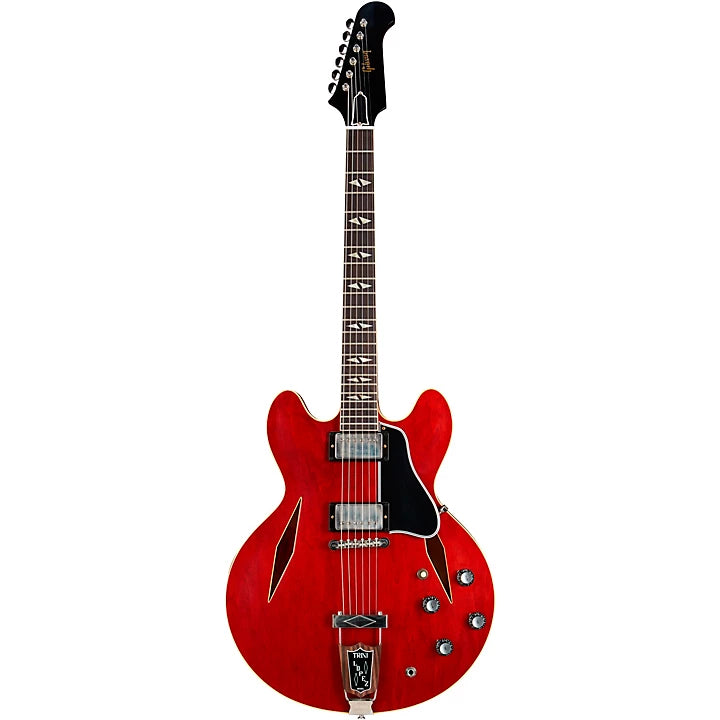

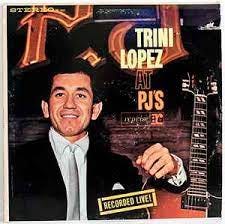
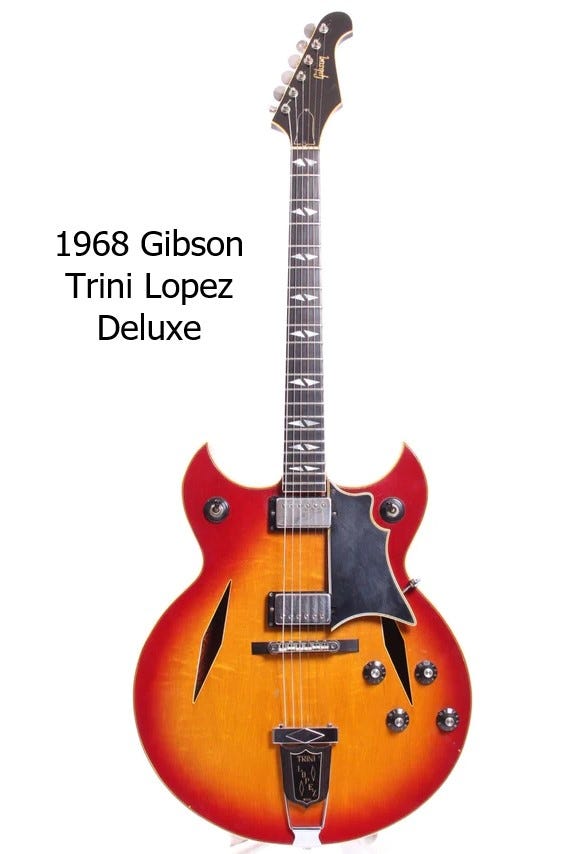
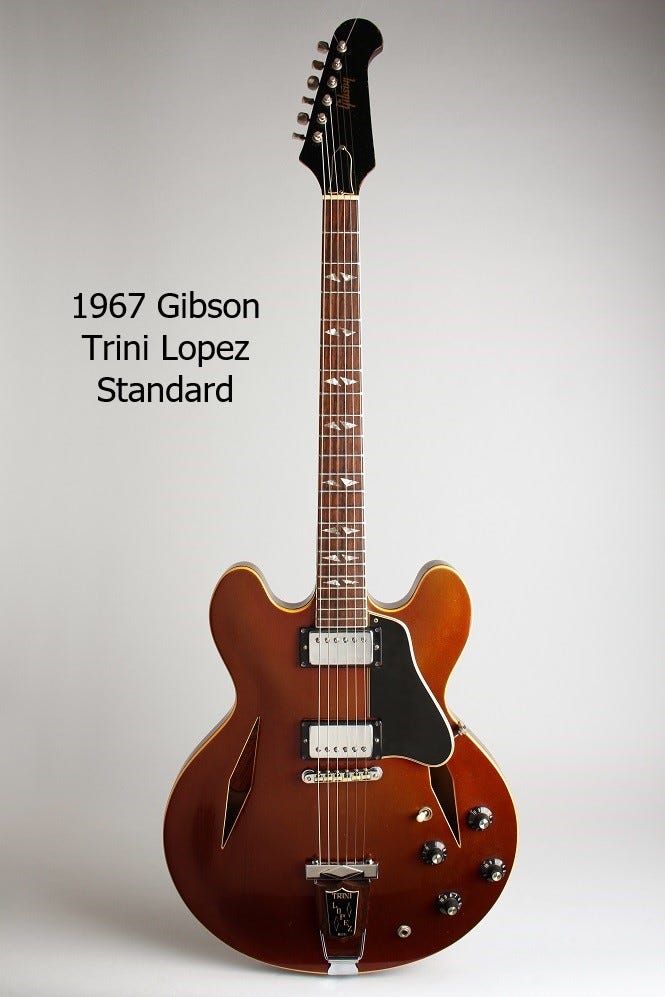
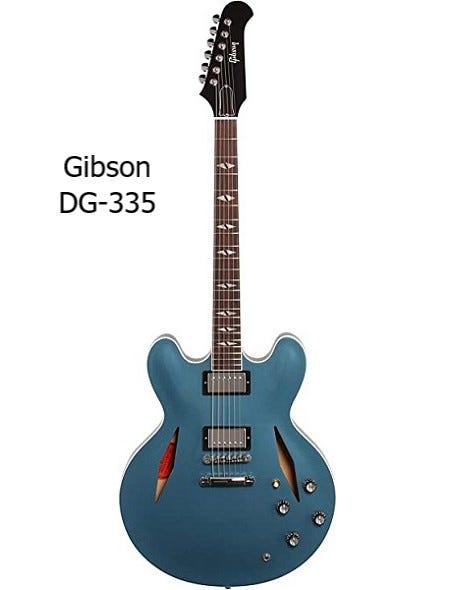
1 comment
Interesting ideas regarding Trini Lopez. Quite informative. I’m lucky to have some, one of which is a 1964 (shipped 10/22/64). It has several unique features for a typical Trini Lopez standard. Such as factory reversed headstock, inlay at first fret, and non bound “f holes.” Was wondering if anyone has a TL standard similar to this one. Thank you.